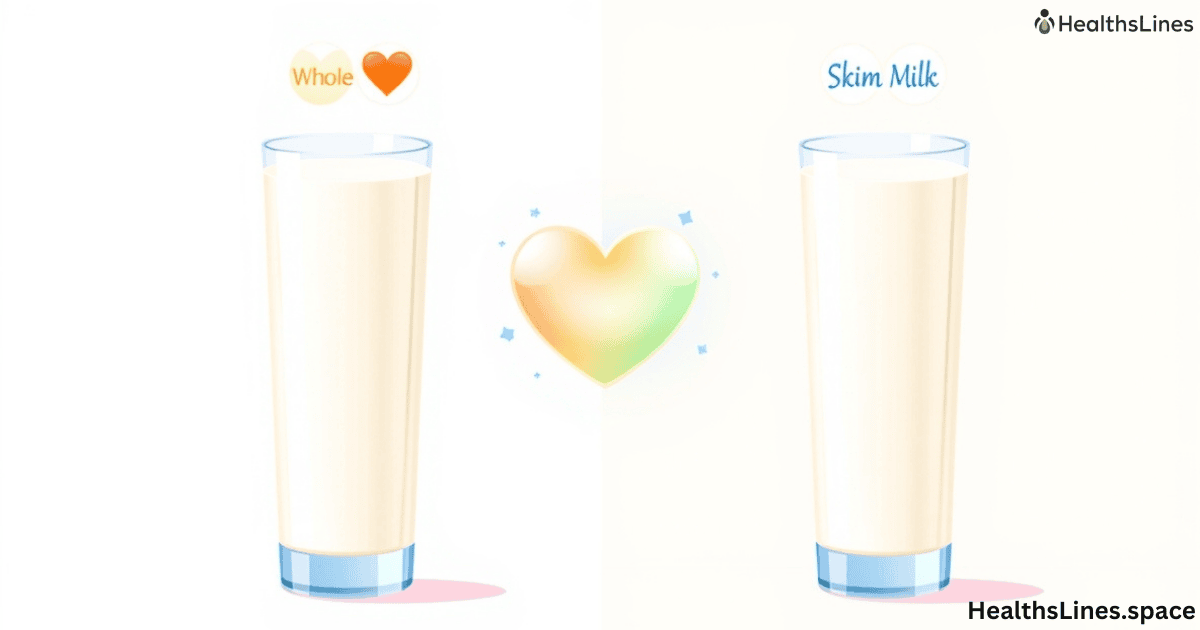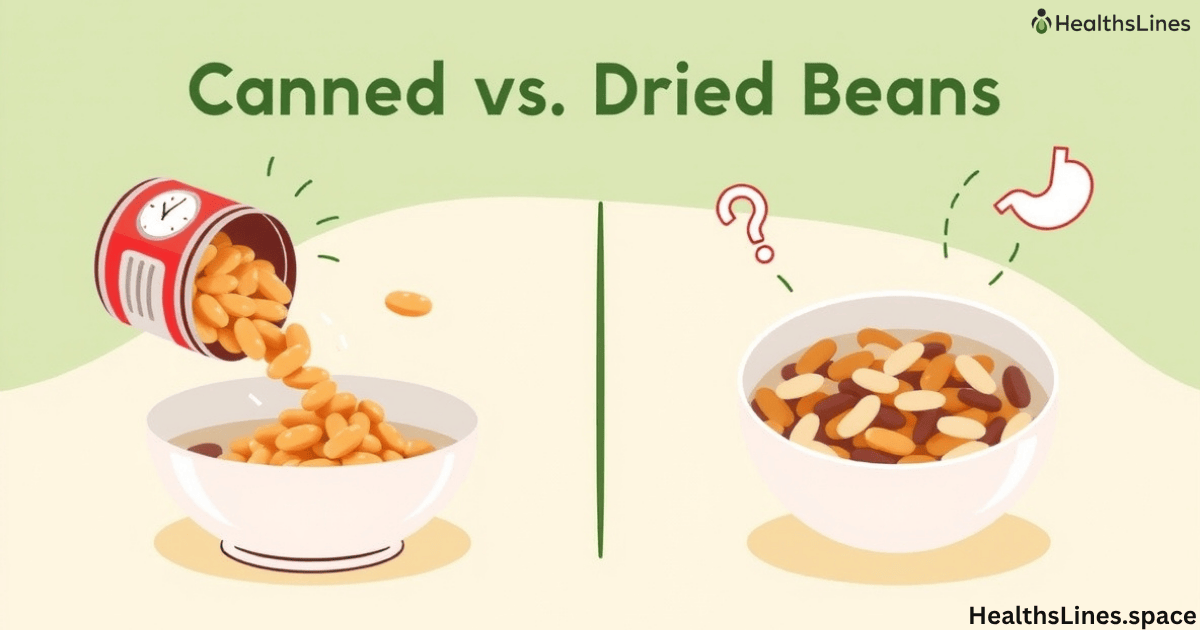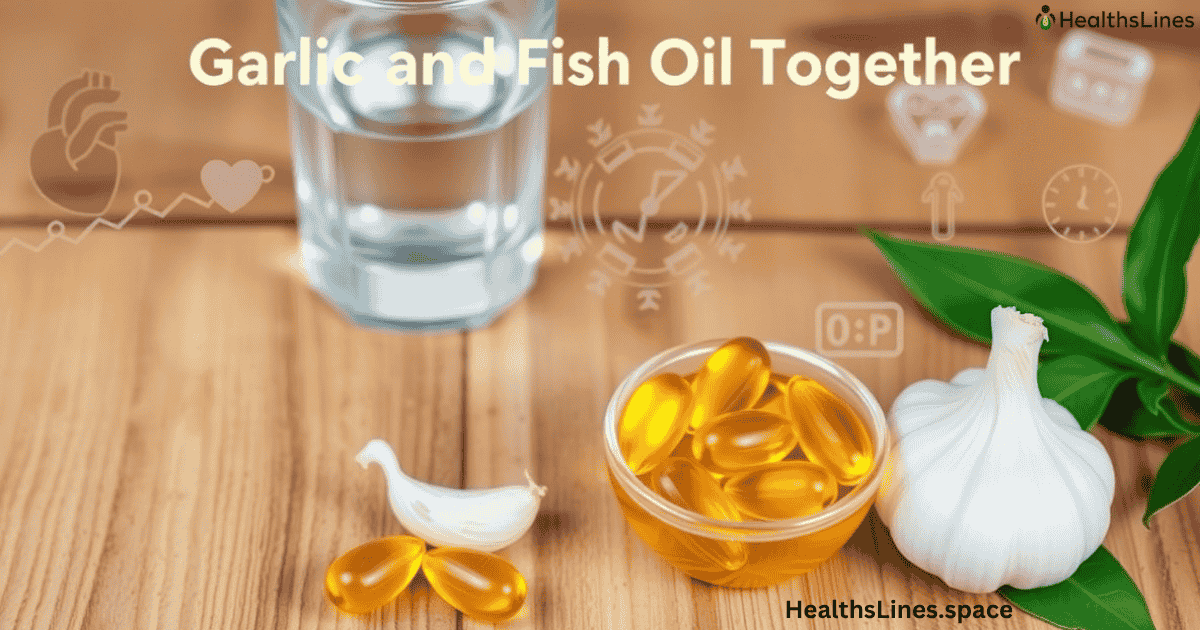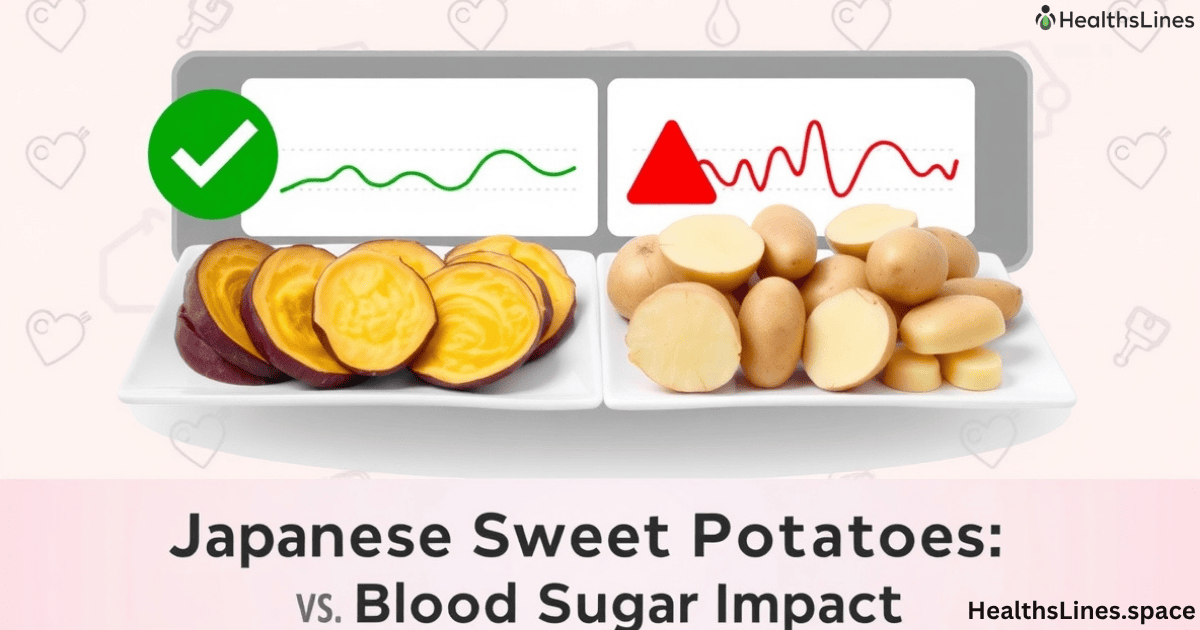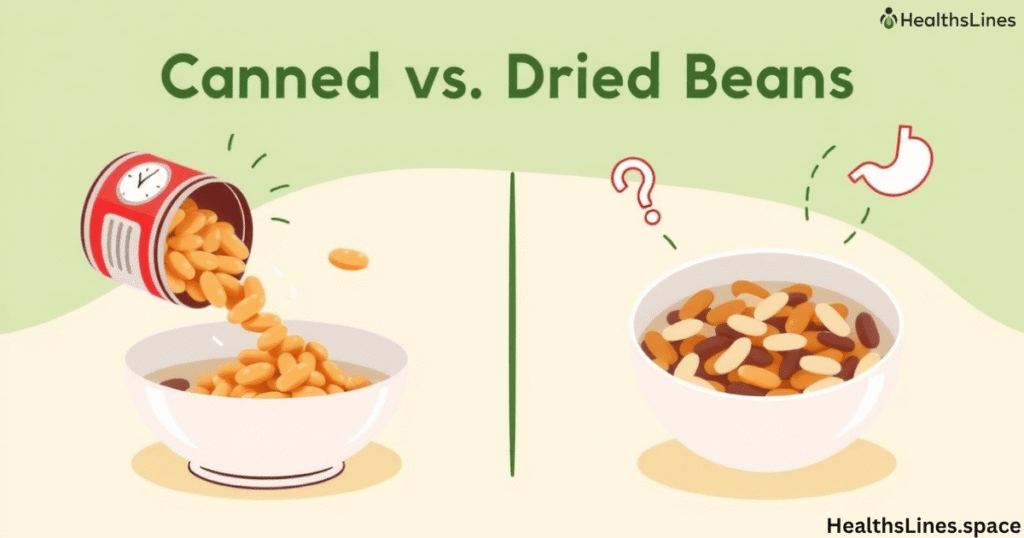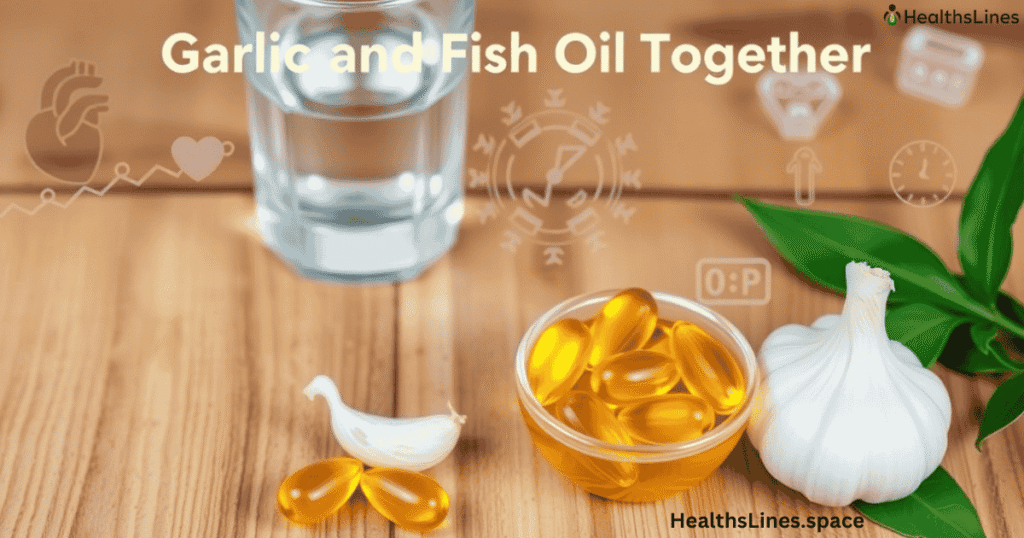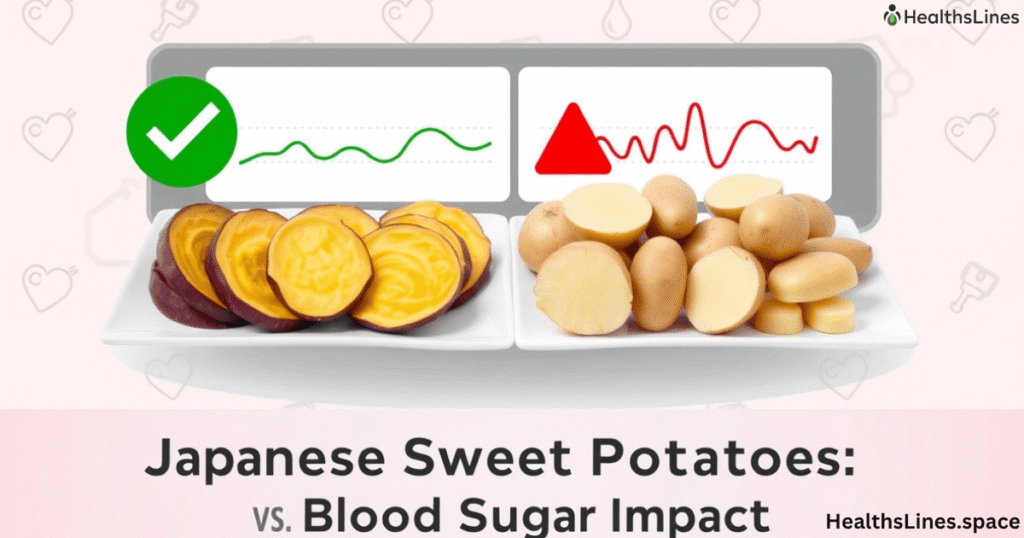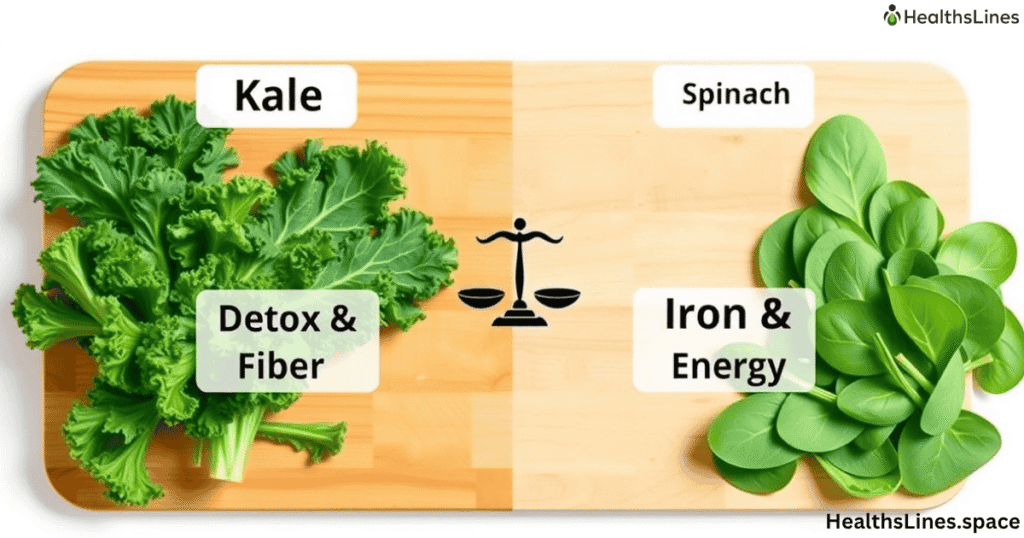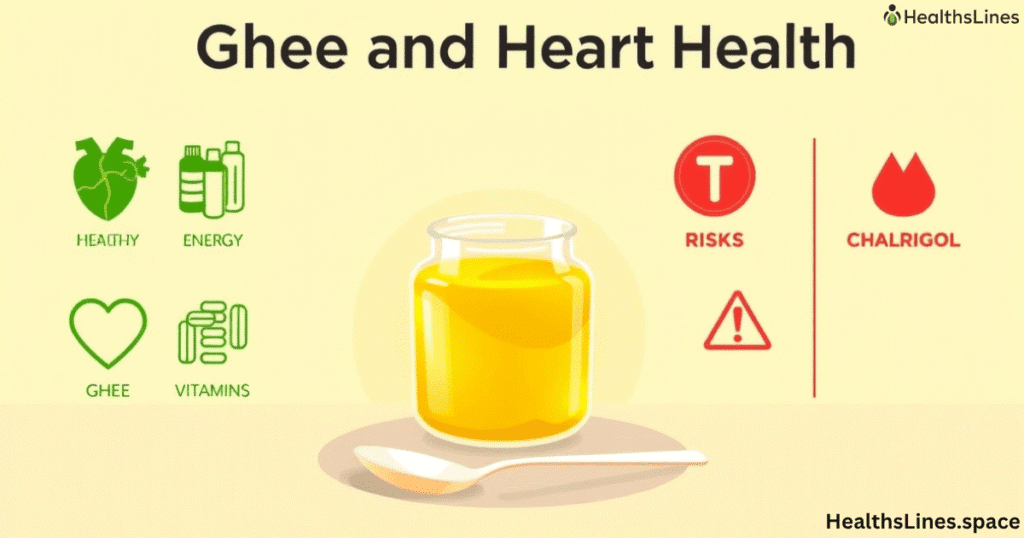Milk is one of the most common drinks in the world. For years, people have argued about whole milk vs skim milk. Many ask which type is better for the heart. Some believe skim milk heart health is stronger because it has less fat. Others believe whole milk heart health is fine because it has more nutrients. Science has studied both, and the truth is not simple. This article explains what we know about milk, fat, cholesterol, and heart disease. By the end, you’ll see which milk may work best for you.
What’s Inside Whole Milk and Skim Milk
The biggest difference between whole milk vs skim milk is the amount of fat. Whole milk calories and fat are higher. A cup of whole milk has around 150 calories and 8 grams of fat. Five of those grams come from saturated fat in whole milk. A cup of skim milk has only about 80 calories and no fat at all.
Even with less fat, skim milk still has calcium, protein, and vitamins. However, fat in milk helps the body absorb vitamins A, D, E, and K. This is why some people believe whole milk is better for getting full nutrition. Skim milk is often fortified with vitamin D to make up for what is lost.
| Nutrient | Whole Milk | Skim Milk |
| Calories | 150 | 80 |
| Fat | 8g | 0g |
| Saturated Fat | 5g | 0g |
| Protein | 8g | 8g |
| Calcium | 28% DV | 30% DV |
| Vitamins A, D, E, K | Natural absorption | Added or reduced |
The Role of Saturated Fat in Heart Health
For many years, doctors told people to avoid saturated fat and cardiovascular disease risks by cutting out full-fat milk. They believed it raised LDL cholesterol and milk was linked to heart disease. This is why many families switched to low-fat milk vs whole milk.
But science has changed. New studies show not all saturated fats are the same. Some dairy fats may not hurt the heart as much as once thought. While whole milk can raise LDL cholesterol, it can also raise HDL cholesterol and dairy fat, which protects the heart. This means the story is more balanced than old advice suggested.
What Research Says About Milk and Heart Disease
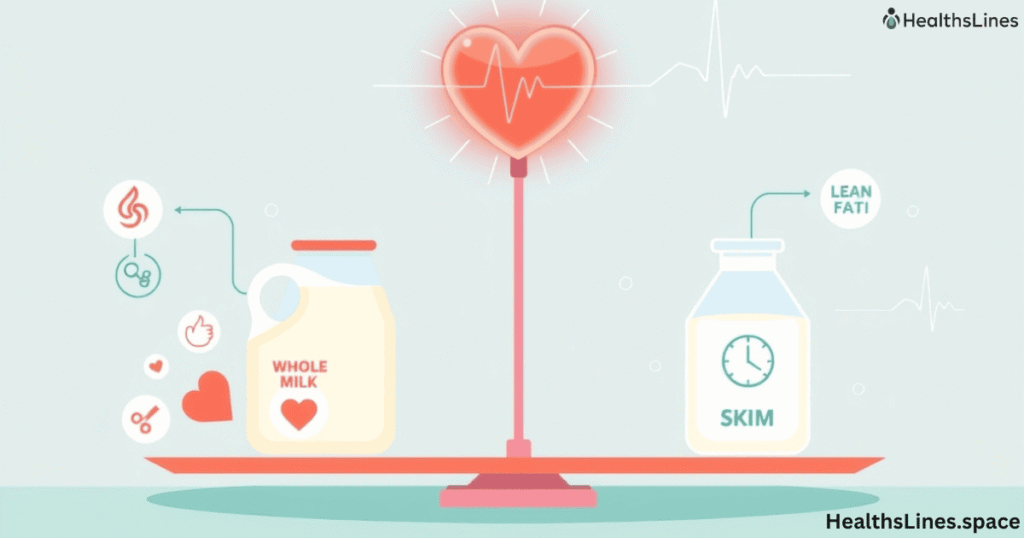
The relationship between milk and the heart has been studied for decades, yet the results are not always clear. Early studies suggested that drinking full-fat milk raised the risk of heart disease because of the saturated fat in whole milk. At that time, experts believed this fat directly increased LDL cholesterol and milk consumption was seen as a danger for heart patients. This thinking pushed people to switch from whole milk to skim milk heart health options in order to protect their hearts.
Newer research, however, tells a different story. Many large studies and reviews now show mixed outcomes. Some find that people who drink more full-fat dairy have no higher risk of heart problems compared to those who drink skim milk. Other studies show that while LDL cholesterol may rise with whole milk, HDL cholesterol and dairy fat can also improve, which protects the heart. A review in the European Journal of Clinical Nutrition even concluded that dairy might not be strongly linked to cardiovascular disease at all.
The key point is that dairy and heart disease are influenced by many factors, not just milk type. Diet, lifestyle, genetics, and weight all play roles. This makes it hard to say that one form of milk is always better than the other for milk for heart health.
Weight, Blood Pressure, and Other Health Markers
Body weight is one of the most important links between milk and heart health. Whole milk calories and fat are higher, so drinking it daily can increase overall calorie intake. For someone trying to lose weight, this extra energy may lead to weight gain, which in turn raises heart disease risk. On the other hand, skim milk benefits people who want fewer calories without losing protein and calcium. Choosing skim milk can support weight management and milk choice, which plays a major role in keeping the heart healthy.
Blood pressure is another marker where milk may help. Some research shows that dairy, whether full-fat or fat-free, is linked to slightly lower blood pressure. This benefit comes from minerals like calcium, potassium, and magnesium. These nutrients help relax blood vessels and improve circulation. However, when it comes to triglycerides, the story is different. Studies have found that in certain people, triglycerides and whole milk intake may rise. High triglycerides can damage arteries over time and increase the risk of heart problems. This is why people with high cholesterol or a history of heart disease may be told to choose skim or low-fat milk. In the end, milk’s effect on these health markers depends not only on the type of milk but also on the person’s overall diet and lifestyle.
Age, Lifestyle, and Individual Differences
The choice between whole milk vs skim milk heart health also depends on age. Children often need more calories and fat for growth. The children’s whole milk recommendation from doctors says kids under two should drink whole milk for brain development. Older children and teens can switch to skim or low-fat milk.
Adults are different. Someone who is active and eats a balanced diet may enjoy whole milk without harm. But a person with high cholesterol or obesity may find skim milk heart health benefits more. Lifestyle choices like exercise, smoking, and diet play a huge role in how milk affects the heart.
Dietary Context Matters
When looking at whole milk vs skim milk heart health, it is important to remember that milk is only one piece of a much larger diet. Drinking skim milk will not protect the heart if the rest of the diet is filled with fried foods, processed snacks, and sugary drinks. In the same way, drinking whole milk may not harm the heart if the diet is mostly balanced and filled with fruits, vegetables, whole grains, and lean proteins. The effect of milk depends greatly on what else you eat every day.
For example, someone who chooses skim milk heart health options but eats fast food often will not gain many benefits. On the other hand, a person who enjoys whole milk with oats, nuts, and fresh fruit in the morning may still keep a healthy heart. This shows why overall diet and milk choice are always connected. Moderation also plays a big role. Having one glass of whole milk daily as part of a balanced diet may be safe, while drinking several large glasses could add too much saturated fat and calories. Experts agree that no single food can make or break heart health. What matters most is the full picture of diet, exercise, and lifestyle working together.
Expert Opinions and Guidelines
The American Heart Association milk guidelines suggest low-fat or fat-free dairy for people with heart disease risk. Their focus is on reducing milk and cholesterol levels and preventing high saturated fat intake.
European experts take a softer view. The European guidelines on milk and heart health admit that the evidence against whole milk is weaker than once believed. Some even argue that moderate whole milk intake may not harm healthy adults. This shows how advice can differ depending on region and evolving science.
Case Study: A Real-Life Example
Consider Maria, a 45-year-old office worker with high cholesterol. She used to drink two cups of whole milk each day. Her doctor suggested switching to skim milk to help her heart. After six months, Maria lost 8 pounds and her LDL cholesterol dropped by 12 points.
But consider John, a 30-year-old athlete. He drinks whole milk daily because it gives him energy and keeps him full. His cholesterol levels remain normal, and he feels stronger during workouts. This shows that the answer is not the same for everyone. Both skim milk vs whole milk cholesterol effects depend on the person’s health and lifestyle.
Choosing Between Whole and Skim Milk
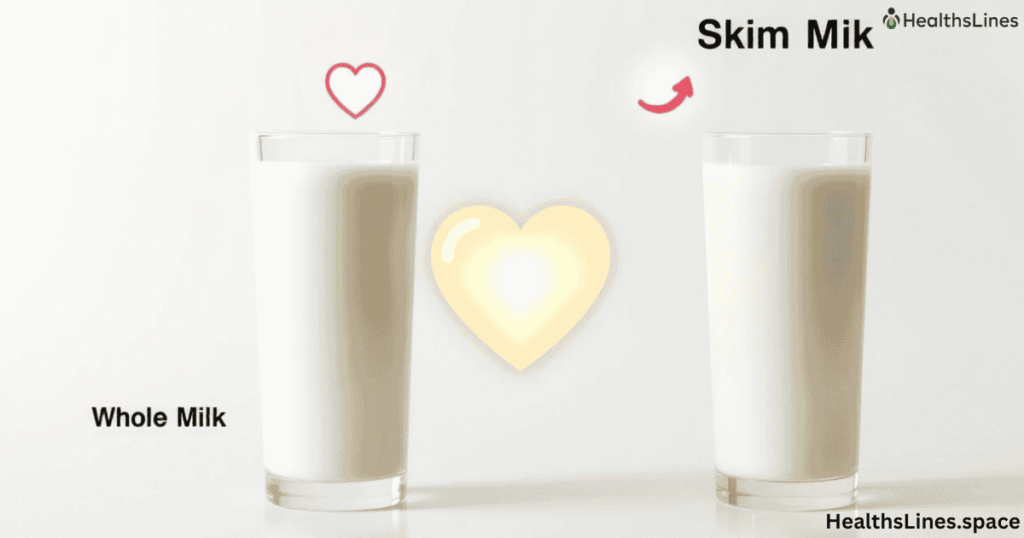
The choice between whole milk vs skim milk often comes down to personal health goals. People are high cholesterol may benefit more from skim milk. This is because it has fewer calories and no saturated fat, which can help lower risks linked to dairy and heart disease. In this case, skim milk benefits include better weight control and improved cholesterol levels. Doctors often recommend skim milk as the best milk for cholesterol patients who need to watch their heart health closely.
On the other hand, some people enjoy whole milk heart health as part of a balanced lifestyle. Whole milk keeps you full longer, offers richer flavor, and helps the body absorb vitamins in milk (A, D, E, K). Active people, or those with no cholesterol concerns, may drink whole milk without harm. In fact, moderate amounts may not raise heart disease risk at all. This is why many nutritionists now suggest looking at the bigger picture. Instead of asking “is skim milk healthier than whole milk”, it may be better to ask which option fits your lifestyle, weight goals, and medical history. The truth is that both whole and skim milk can be part of a heart-healthy diet, as long as they are consumed in moderation and balanced with healthy food choices.
Conclusion
The debate over whole milk vs skim milk heart health is not black and white. Whole milk has more fat and calories but also more nutrients and satiety. Skim milk has fewer calories and supports weight management and milk choice, especially for those at risk of heart disease.
The most important lesson is balance. Both whole and skim milk can fit into a healthy lifestyle if consumed in moderation. Your health history, diet, and daily activity should guide your choice. Talking with a doctor or nutritionist can help you decide which milk is truly the best milk for heart health for you.
